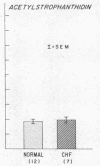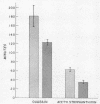Abstract
Isolated cat right ventricular papillary muscles were used to study the effects of antibodies with high affinity for ouabain and acetyl strophanthidin on myocardium exposed to these cardioactive steroids. Antibodies with average intrinsic affinity constants for ouabain and acetyl strophanthidin of the order of 108 M-1 were raised in rabbits challenged by repeated injection of a conjugate of ouabain covalently linked to a poly D,L-alanyl derivative of human serum albumin. Effects were assessed in terms of time-course and extent of inotropy reversal, influence of experimentally induced ventricular failure, digitalis-antibody concentration relations, influence of digitalis-antibody complex on response to additionally added digitalis, and relation of antibody effects on digitalis-induced automaticity and contracture to reversal of inotropy. Specific antibody (but not control antibody) in 1.1-1.5-fold molar excess over cardioactive steroid concentrations blocked positive inotropic effects of ouabain and acetyl strophanthidin, and gradually reversed established contractile effects of these agents with a mean time for half-reversal of ouabain-induced inotropy of 124±6 (SEM) min and 37±3 min for half-reversal of acetyl strophanthidin-induced inotropy. Papillary muscles from cats with right ventricular failure induced by chronic pulmonary artery constriction responded similarly. Both normal and failing muscles returned to but not below levels of contractility existing before cardioactive steroid exposure, and time for half-reversal of inotropy by antibody was significantly shorter than time for half-reversal after removal of ouabain or acetyl strophanthidin by muscle bath washout alone. Presence of ouabain- or acetyl strophanthidin-antibody complex did not alter the myocardial contractile response to subsequently added cardioactive steroids.
Spontaneous automaticity occurring as a toxic response to ouabain or acetyl strophanthidin in eight muscles was rapidly reversed by specific antibody at a time when positive inotropic effects were still fully manifest. Early contracture was also reversed by specific antibody. These studies provide further support for the concept that cardiac glycoside-specific antibodies are capable of reversing established cellular effects of cardioactive steroids.
Full text
PDF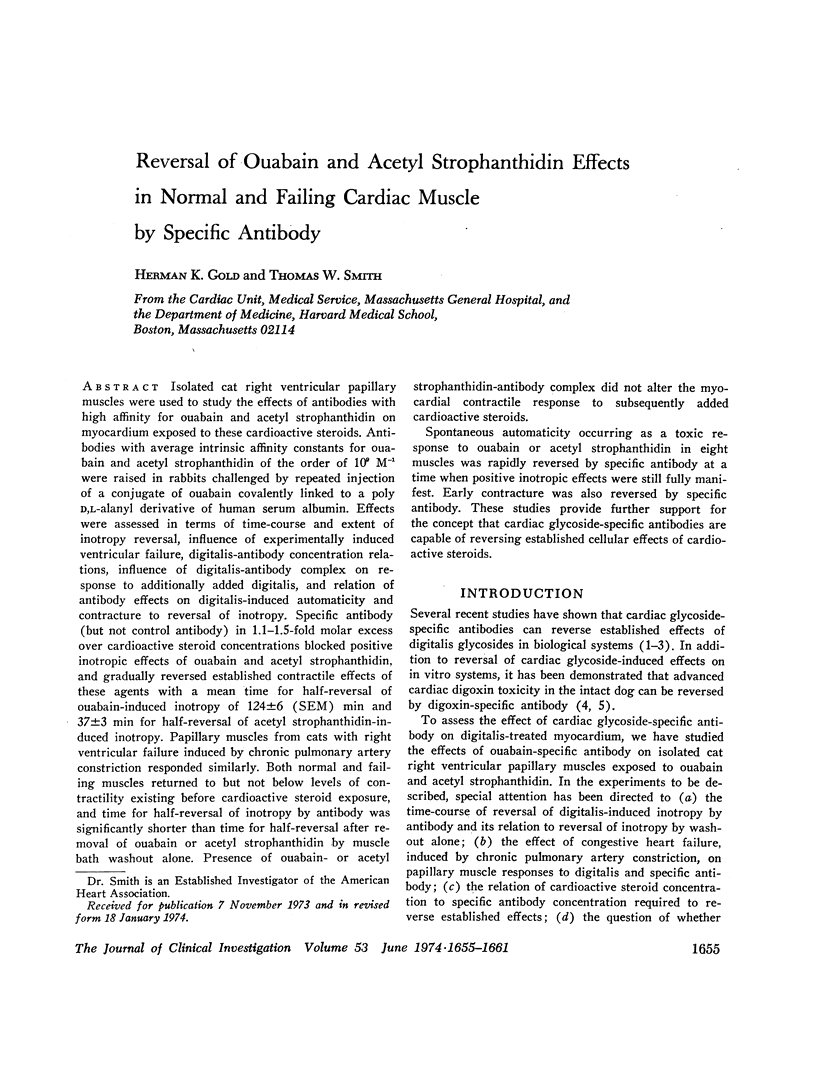
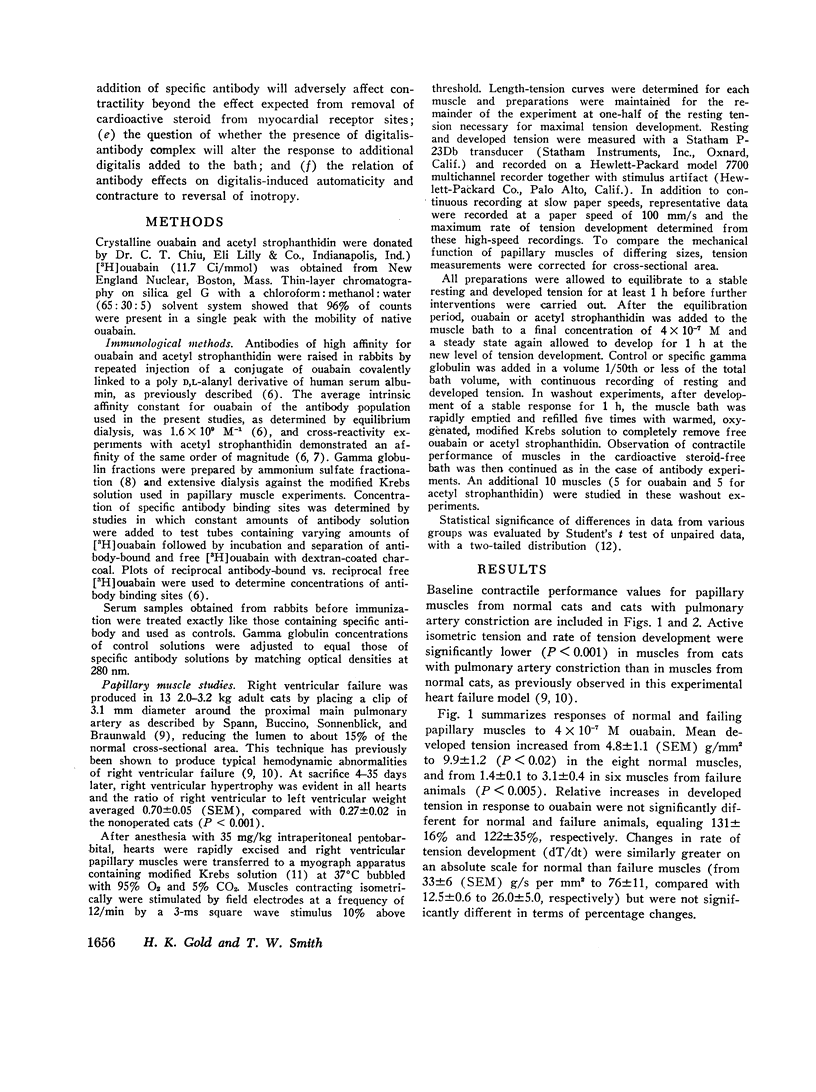
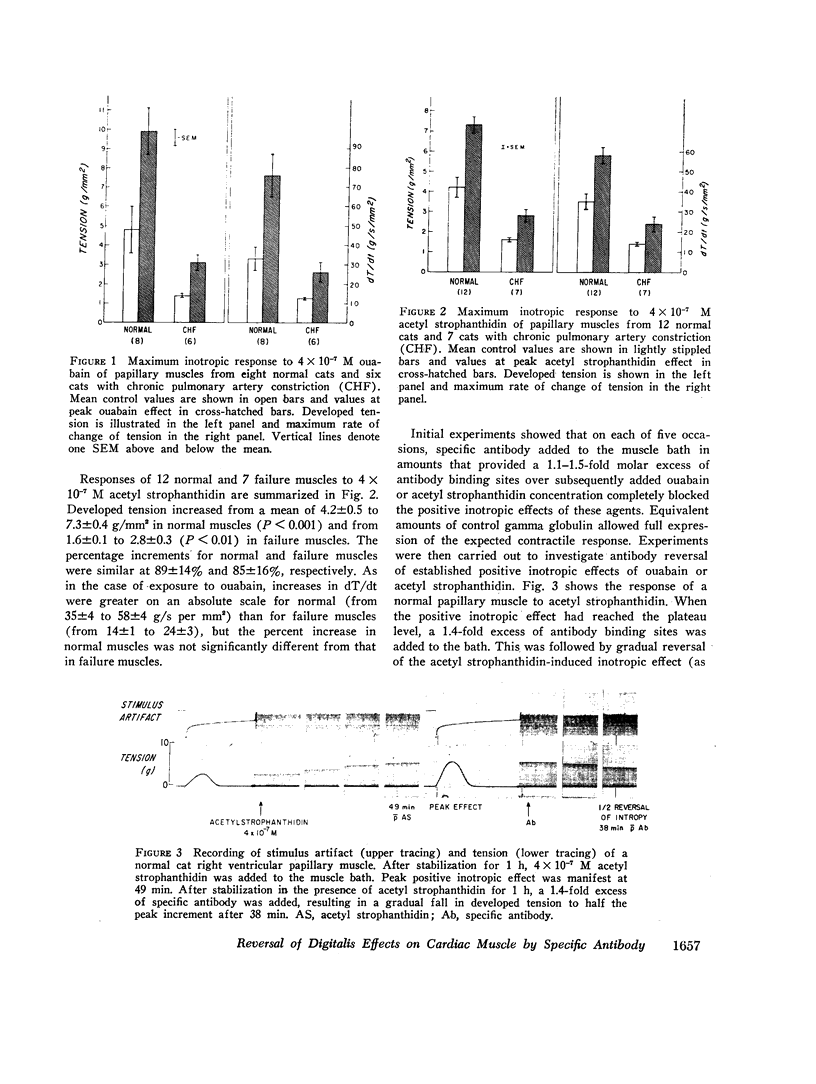
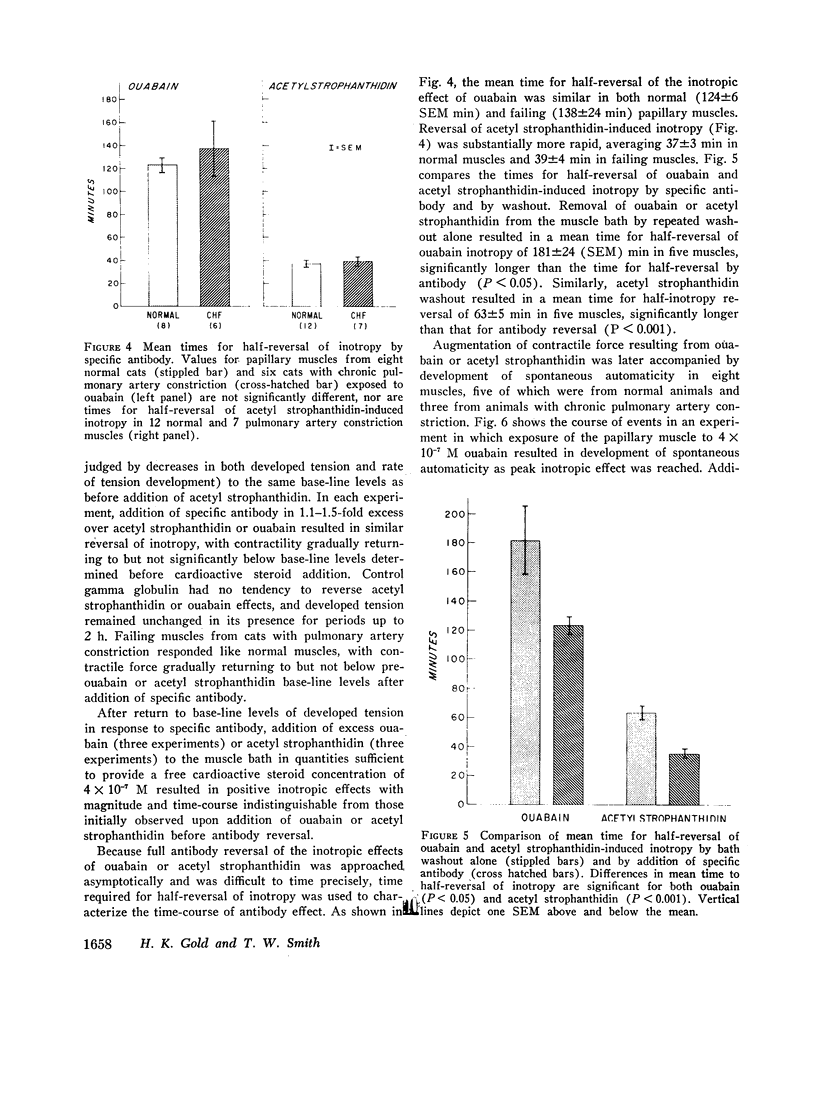
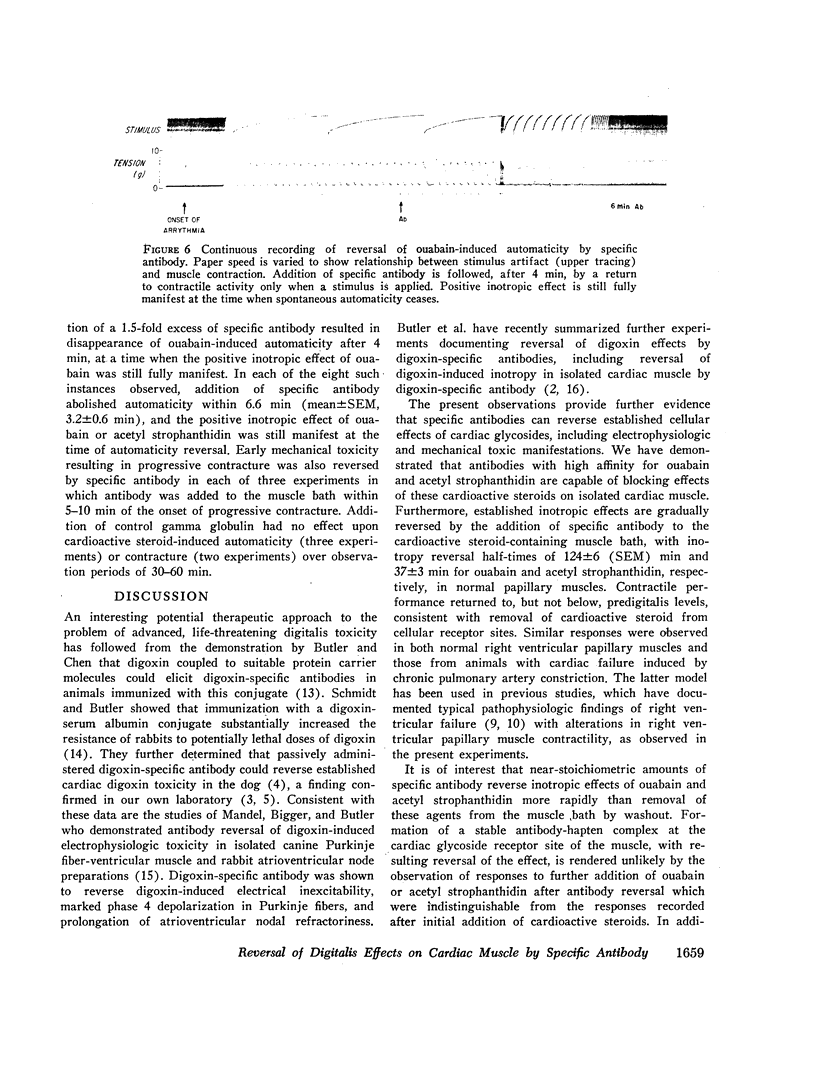
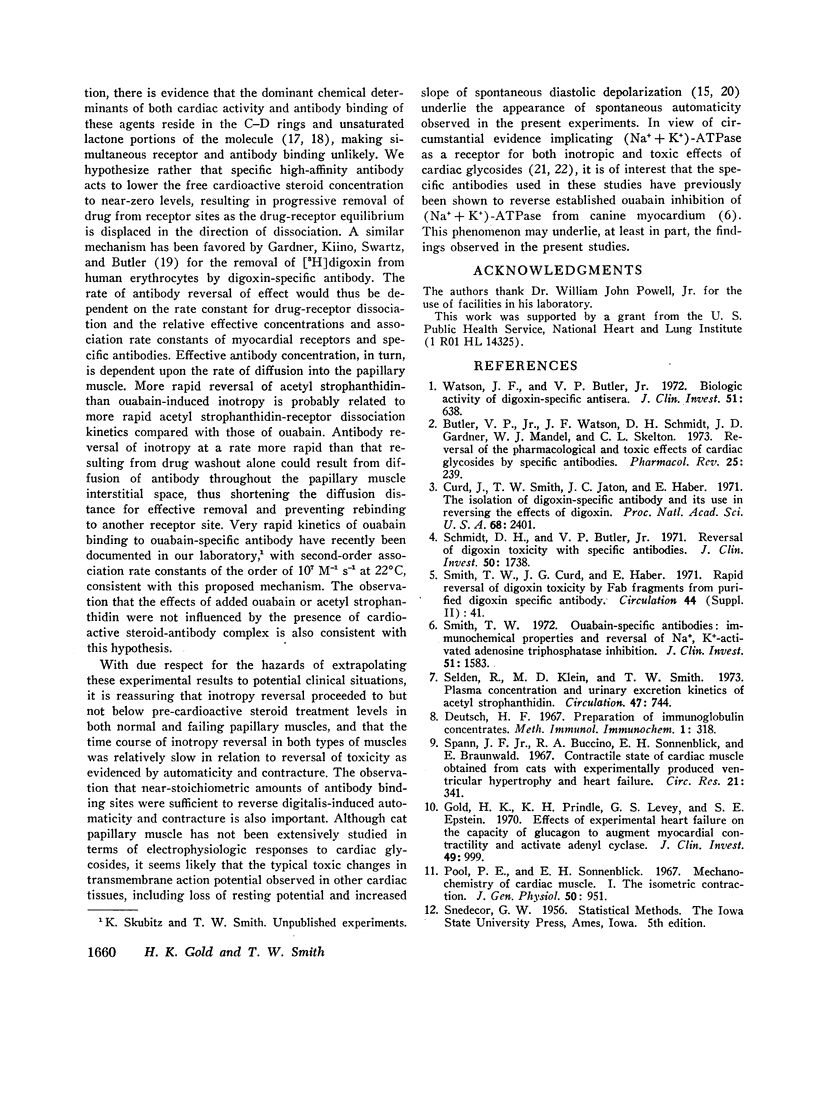
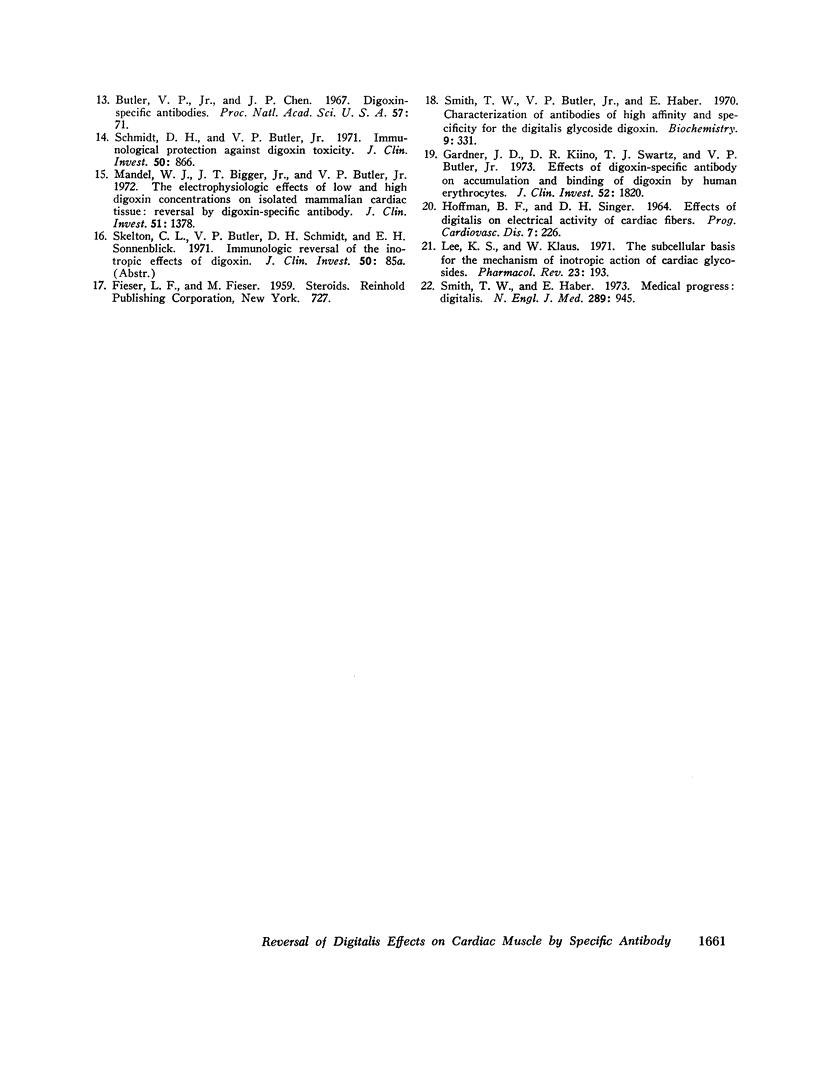
Images in this article
Selected References
These references are in PubMed. This may not be the complete list of references from this article.
- Butler V. P., Jr, Chen J. P. Digoxin-specific antibodies. Proc Natl Acad Sci U S A. 1967 Jan;57(1):71–78. doi: 10.1073/pnas.57.1.71. [DOI] [PMC free article] [PubMed] [Google Scholar]
- Butler V. P., Jr, Watson J. F., Schmidt D. H., Gardner J. D., Mandel W. J., Skelton C. L. Reversal of the pharmacological and toxic effects of cardiac glycosides by specific antibodies. Pharmacol Rev. 1973 Jun;25(2):239–248. [PubMed] [Google Scholar]
- Curd J., Smith T. W., Jaton J. C., Haber E. The isolation of digoxin-specific antibody and its use in reversing the effects of digoxin. Proc Natl Acad Sci U S A. 1971 Oct;68(10):2401–2406. doi: 10.1073/pnas.68.10.2401. [DOI] [PMC free article] [PubMed] [Google Scholar]
- Gardner J. D., Kilno D. R., Swartz T. J., Butler V. P., Jr Effects of digoxin-specific antibodies on accumulation and binding of digoxin by human erythrocytes. J Clin Invest. 1973 Aug;52(8):1820–1833. doi: 10.1172/JCI107364. [DOI] [PMC free article] [PubMed] [Google Scholar]
- Gold H. K., Prindle K. H., Levey G. S., Epstein S. E. Effects of experimental heart failure on the capacity of glucagon to augment myocardial contractility and activate adenyl cyclase. J Clin Invest. 1970 May;49(5):999–1006. doi: 10.1172/JCI106319. [DOI] [PMC free article] [PubMed] [Google Scholar]
- Lee K. S., Klaus W. The subcellular basis for the mechanism of inotropic action of cardiac glycosides. Pharmacol Rev. 1971 Sep;23(3):193–261. [PubMed] [Google Scholar]
- Mandel W. J., Bigger J. T., Jr, Butler V. P., Jr The electrophysiologic effects of low and high digoxin concentrations on isolated mammalian cardiac tissue: reversal by digoxin-specific antibody. J Clin Invest. 1972 Jun;51(6):1378–1387. doi: 10.1172/JCI106933. [DOI] [PMC free article] [PubMed] [Google Scholar]
- Pool P. E., Sonnenblick E. H. The mechanochemistry of cardiac muscle. I. The isometric contraction. J Gen Physiol. 1967 Mar;50(4):951–965. doi: 10.1085/jgp.50.4.951. [DOI] [PMC free article] [PubMed] [Google Scholar]
- Schmidt D. H., Butler V. P., Jr Immunological protecion against dixin toxicity. J Clin Invest. 1971 Apr;50(4):866–871. doi: 10.1172/JCI106558. [DOI] [PMC free article] [PubMed] [Google Scholar]
- Schmidt D. H., Butler V. P., Jr Reversal of digoxin toxicity with specific antibodies. J Clin Invest. 1971 Aug;50(8):1738–1744. doi: 10.1172/JCI106663. [DOI] [PMC free article] [PubMed] [Google Scholar]
- Selden R., Klein M. D., Smith T. W. Plasma concentration and urinary excretion kinetics of acetyl strophanthidin. Circulation. 1973 Apr;47(4):744–751. doi: 10.1161/01.cir.47.4.744. [DOI] [PubMed] [Google Scholar]
- Smith T. W., Butler V. P., Jr, Haber E. Characterization of antibodies of high affinity and specificity for the digitalis glycoside digoxin. Biochemistry. 1970 Jan 20;9(2):331–337. doi: 10.1021/bi00804a020. [DOI] [PubMed] [Google Scholar]
- Smith T. W., Haber E. Digitalis. I. N Engl J Med. 1973 Nov 1;289(18):945–952. doi: 10.1056/NEJM197311012891805. [DOI] [PubMed] [Google Scholar]
- Smith T. W. Ouabain-specific antibodies: immunochemical properties and reversal of Na + , K + -activated adenosine triphosphatase inhibition. J Clin Invest. 1972 Jun;51(6):1583–1593. doi: 10.1172/JCI106956. [DOI] [PMC free article] [PubMed] [Google Scholar]
- Spann J. F., Jr, Buccino R. A., Sonnenblick E. H., Braunwald E. Contractile state of cardiac muscle obtained from cats with experimentally produced ventricular hypertrophy and heart failure. Circ Res. 1967 Sep;21(3):341–354. doi: 10.1161/01.res.21.3.341. [DOI] [PubMed] [Google Scholar]
- Watson J. F., Butler V. P., Jr Biologic activity of digoxin-specific antisera. J Clin Invest. 1972 Mar;51(3):638–648. doi: 10.1172/JCI106853. [DOI] [PMC free article] [PubMed] [Google Scholar]






